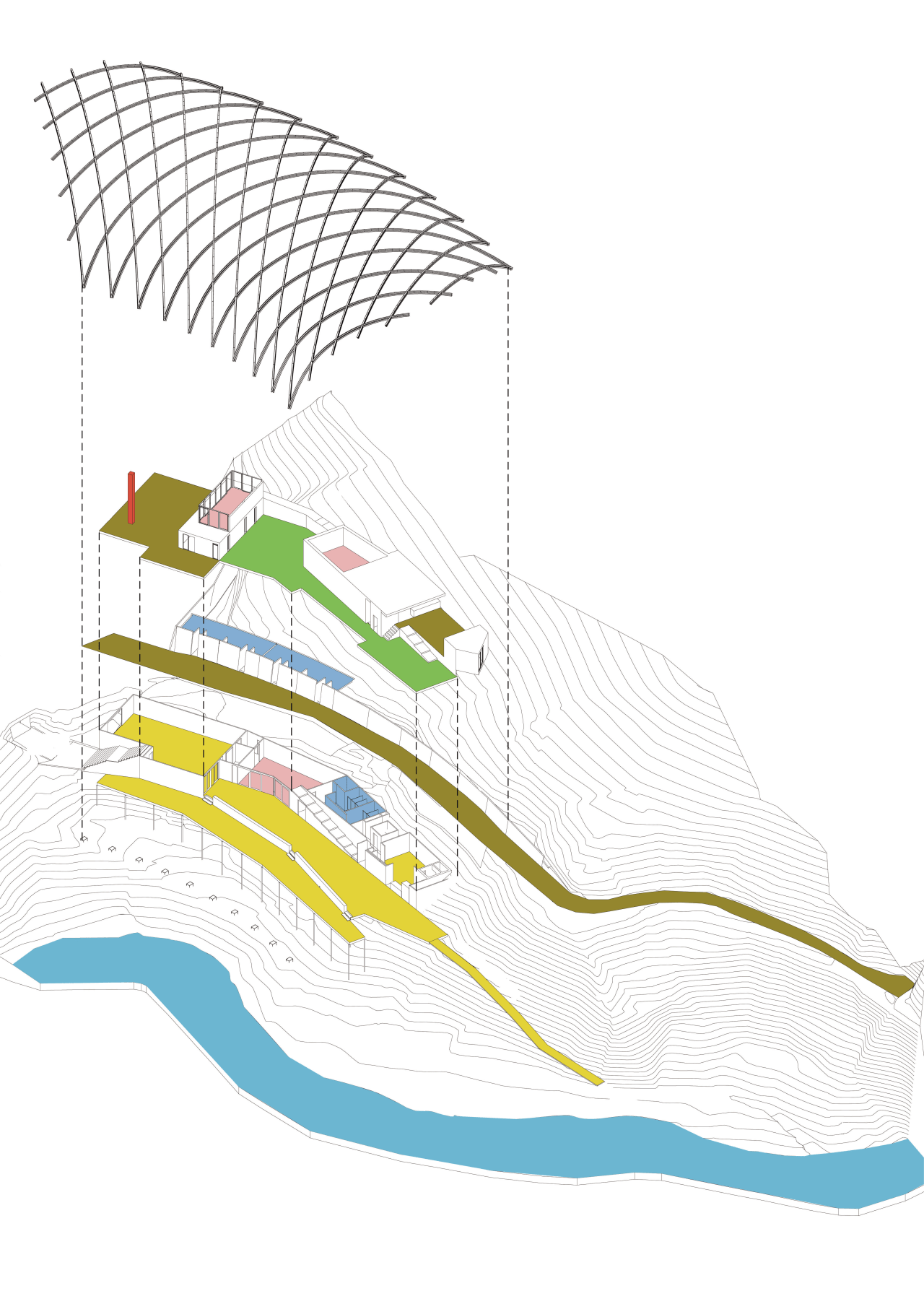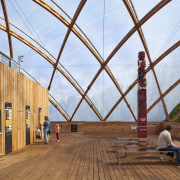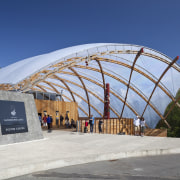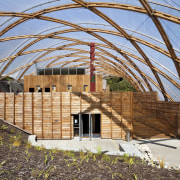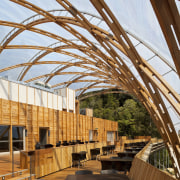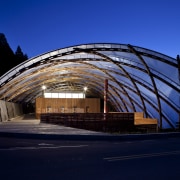Glow in the dark
A billowing canopy envelops the public facilities and references the natural attractions at the new Waitomo Glowworm Caves Visitor Centre
Fires, like natural disasters, can never be predicted. But while such occurrences invariably create upheaval, many firms take the opportunity to rethink their business requirements so they can tailor a rebuilding programme to best suit their current needs.
Tourism Holdings Ltd (THL), the company that operates the Waitomo Glowworm Caves, was faced with such a situation following a fire that destroyed the visitor centre.
Chief executive officer Grant Webster says the company spent several months researching the possibilities, speaking with stakeholder groups and establishing key themes.
"Several points emerged," Webster says. "The new visitor centre needed to have a link to the community and the conservation of the area, and it needed to incorporate sustainable design initiatives. We also wanted to acknowledge the unique nature of the caves and surrounding bush walks. The design had to provide something different, so the building would be an integral part of a world-famous tourism experience."
Webster says the rebuild meant the centre could be designed to accommodate greater numbers of visitors up to 2000 daily and provide better separation between tour groups and families.
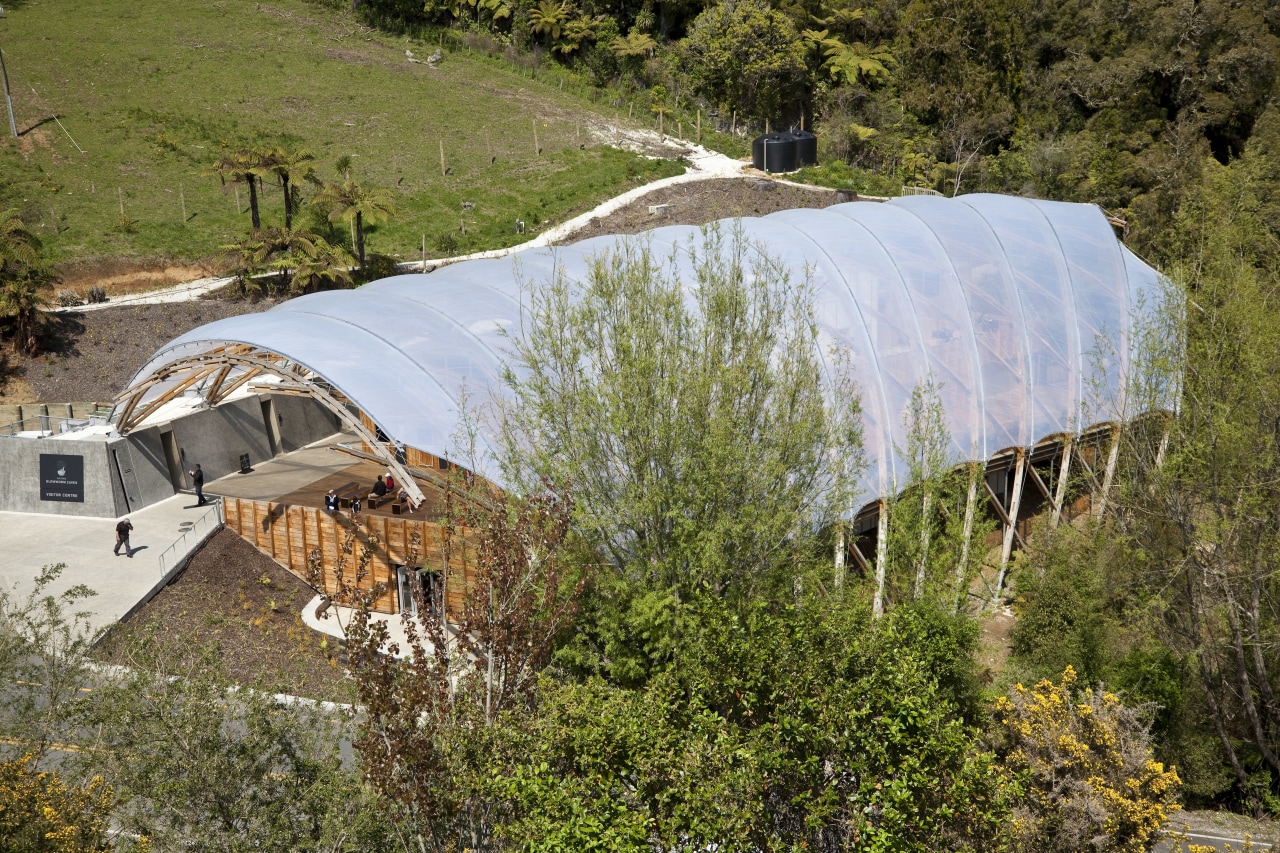
"The building and public areas needed to have a flow, so people would be guided through the centre and down towards the caves. However, it was important that the architecture didn't overpower the caves or the bush, but rather provided a strong visual connection to both these features."
The solution provided by Architecture Workshop presents an air-filled canopy gridshell that appears to float above a series of closed timber boxes and open terraces. The box-like elements accommodate administration facilities, a cafe, restaurant, theatre, exhibition space and a small meeting room positioned to maximise the bush views.
The design team says it wanted to reference the fact that the historic caves were formed from the limestone transported by water over thousands of years. To emphasise a connection with the Waitomo stream and the flow of water through the caves, the canopy gridshell is aligned with the curve of the stream. The design reinforces the idea of a simple lightweight sky shell that forms a counterpoint to the subterranean cave space that is dissolved and moulded out of the ground much like a positive and negative.
Furthering the river analogy, the woven form of the timber ribbing supporting the canopy is reminiscent of a traditional Maori hinaki or eel trap.
The designers say the geometry of the canopy was described as the surface of a toroid, which is a doughnut-shaped object. Radiata pine LVL (laminated veneer lumber), a sustainable resource, was prefabricated into curved and twisted ribs. These timber I-beams were then joined, overlapped in layers and screwed together on site.

Inflated ETFE (ethylene tetraflurorethylene) air pillows were tethered over the gridshell structure like a tent fly. The long translucent pillows are structurally efficient in spans of 4-5m that follow the lines of the LVL ribs.
As well as spanning the existing pathways, the gridshell provides some shelter on the journey to and from the caves and maintains a strong visual connection to the established native bush.
In contrast to the soaring, translucent canopy, the base building is an angular, solid timber structure that steps down the slope to follow the contours of the land. The use of natural timbers retains the bush reference. Webster says it has also resulted in the project collecting two NZ Timber Design Awards this year.
Credit list
Client
Architect
Story by: Trendsideas
Home kitchen bathroom commercial design
